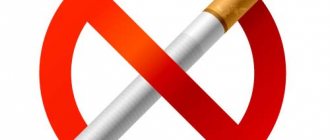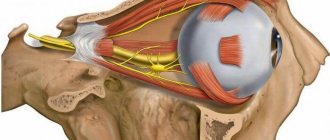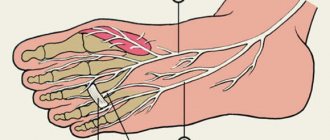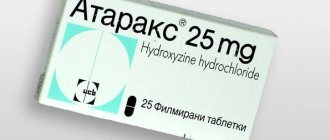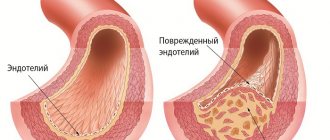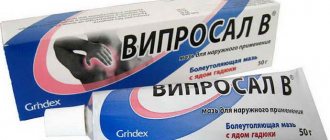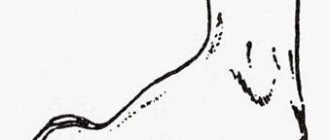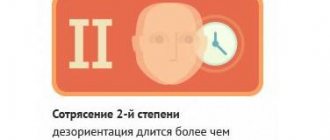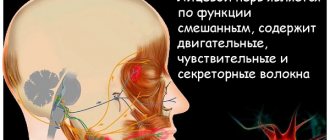First aid
What to do if the injection was performed at home by an unqualified employee? You need to urgently call an ambulance or go to the hospital yourself. It is very important to provide timely assistance in case of irritation or injury to the sciatic nerve.
If symptoms arise due to the fault of medical personnel, be sure to consult a doctor with complaints of persistent pain or other abnormalities.
To reduce the pain that surrounds the lower half of the spine and limbs, a blockade is used. The following solutions are injected into the affected area:
- Novocaine;
- Diclofenac;
- Lidocaine;
- Disprospan.
The dosage of the drug is determined by the doctor based on individual characteristics. To enhance the therapeutic effect, it is permissible to inject an additional substance - Hydrokartisone.
Important! For patients diagnosed with liver and kidney diseases, during pregnancy and lactation, the use of the above medications is contraindicated.
Such manipulations make it possible to achieve relief in the patient’s condition in the short term, stop the inflammatory process, and reduce the chances of developing side effects.
How to choose the right place for an injection?
If a person undertakes to inject his loved ones or relatives on his own, then he must understand the full degree of responsibility. The slightest mistake during an injection is fraught with disruption of the musculoskeletal system and paralysis of the lower extremities.
Without medical education, few people know that the nerve trunk can be palpated. To do this, you should visually divide the buttock into four parts with a horizontal and vertical line. The top outer part of the square is the only correct place to hit. Deviation from the intended area or junction increases the risk that the sciatic nerve will be affected.
The length of the needle also depends on how painlessly and correctly the injection is administered. This issue is especially relevant when vaccinating children. The muscle mass of the gluteal hemispheres is less than in adults, so a long needle can injure the sciatic nerve and provoke the development of sciatica.
The risks of hitting the sciatic nerve when administering an intramuscular injection by healthcare workers are minimal. Therefore, you should trust your health and the health of your children to specialists.
Neuralgia is neuropathic pain in the area of innervation of the nerve trunk or its peripheral branches, which is not a reaction to damage or inflammation. If there was no organic cause initially, it is called primary. If the pain that accompanied the somatic pathology does not go away after treatment, the disease is said to be secondary or symptomatic.
Progress of the operation
The operation can be performed under local anesthesia or general anesthesia. To carry it out, microsurgical instruments and a microscope are used. The nerve is exposed within healthy tissue and is gradually released from the scar complex. At the same time, the changed surrounding tissues are removed. The remnants of the scar that surround the nerve like a sheath are removed. For the released nerve, a bed is created between the muscles, into which it fits. This bed is necessary to avoid further cicatricial adhesions, deformations of the nerve and its compression. The nerve is placed in the bed so that the muscles cover it, but so that it does not come into contact with the aponeurosis, skin, or fascia. The surgical wound is sutured.
Drug therapy
Treatment of the sciatic nerve requires conservative methods.
The basis of the medicinal method is taking medications, such as:
- Non-steroidal drugs that have an anti-inflammatory effect.
- Pain sensations are suppressed with the help of analgesics.
- Muscle relaxants help reduce tension in muscle tissue.
- Peripheral blood circulation can be improved with the help of myotropic antispasmodics.
An incorrect injection into the sciatic nerve entails consequences, which are easier to overcome with complex therapy. Therapeutic gymnastics will help you recover quickly.
Nuance! Physical therapy should not be confused with regular exercise. The main task of exercise therapy is the elimination of post-traumatic syndrome. A set of gentle exercises is prescribed during the rehabilitation period to strengthen the muscle frame and train muscle endurance.
During the treatment of irritated nerve fiber, regular water procedures in the pool and cycling are recommended. You need to exercise without straining your body, and correctly balance physical activity with rest.
What to do if the pain does not go away after treatment?
Regardless of whether the pain syndrome after treatment is neuralgia, the first step is to visit the same doctor who performed it. After all, only he knows exactly what procedures were performed, what the initial clinical situation was and what complications are most likely. Even if you are sure that you are dealing with neuralgia, you will need a detailed statement of the manipulations performed.
If, after examination by the attending physician, the cause of the pain is not established, he may prescribe additional examination:
- Computed tomography of the jaws. One of the causes of pain may be compression of a nerve branch by an intramaxillary neoplasm. And, if cysts are usually easily detected using conventional radiography, then the formation of bone density: osteomas, cementomas, odontomas - may be barely noticeable or not visible at all. In this case, surgical treatment will be required. Additional root canals, deficiencies in their treatment and filling, as well as material removed beyond the apex, can also be seen on CT;
3D computed tomography (CT) of the jaw – innovative diagnostics
- Consult an ENT doctor – pain in the upper jaw can be a symptom of sinusitis, including those of odontogenic origin. A computed tomography scan will also be required to determine the source of inflammation.
A consultation with a neurologist is usually prescribed as a last resort, when all possible organic causes have been excluded or their elimination has not helped solve the problem. It is better to take the results of all examinations and an extract from the dental record with you; the neurologist may need this data. If confirmed, appropriate medical or surgical treatment is carried out.
Leading doctors
Gribov Gennady Vyacheslavovich
Danube Ave., 47
Kovalenko Sergey Nikolaevich
Danube Ave., 47
Neurolysis is a surgical procedure used to treat damage (including temperature) to nerve ganglia. The procedure carries certain risks: in rare cases, even greater nerve damage is possible.
The operation is performed only in a hospital setting, since it is technically difficult to perform. After the procedure, rehabilitation is prescribed to speed up and properly restore the nerve ganglion.
What symptoms indicate that the sciatic nerve is affected?
Injury to nerve fibers results in unbearable pain. For a person with a low pain threshold, it is fraught with loss of consciousness.
The main indicators of unsuccessful drug administration are reduced to the following criteria:
- attacks of pain cannot be stopped even after the procedure is completed;
- the nature of the pain will change, it will become paroxysmal, but the injury constantly causes discomfort;
- weakness in the legs, decreased movement activity;
- inability to walk independently;
- partial disruption of the functioning of the locomotor system.
The pain intensifies with pressure on the lower limbs (movement). Inaction can lead to complete paralysis of the patient.
What folk remedies will help?
You can numb the nerve at home using folk remedies. We provide the most effective recipes.
Sauerkraut
Even in the old days, pinched sciatic nerves were treated with cabbage. This is an extremely useful product that creates favorable conditions in the intestines for the development of beneficial bacteria. The high content of B vitamins in sauerkraut will also help. This remedy is used for prevention, but cabbage cannot relieve pain during the acute period.
Brew the beans
Use peeled green bean leaves as tea leaves. This remedy has a good diuretic effect, helps eliminate unpleasant symptoms, and saturates the body with B vitamins, which are necessary for the regeneration of nerve fibers.
Decoction of aspen leaves
Brew a large spoonful of aspen leaves in 1 liter of boiling water. Drink the decoction four times during the day, it is better to do this before meals.
Calendula infusion
During the day you need to drink 250 g of infusion. A tablespoon is brewed in a glass of boiling water. Then boil for an additional 5 minutes and strain. Drink in two doses, each time before the main meal.
Natural wax
If natural beeswax is melted, it can be used for compresses in home treatment. First, it is recommended to rub the sore spot, and then apply hot wax to it, distributing it evenly over the entire surface. Next, wrap it in a warm scarf and leave until the wax cools completely.
Warming baths
Grind the horseradish root and wrap it in several layers of gauze. Then dip the gauze into the bath water. You can brew a kilogram of pine shoots in three liters of water, strain and pour into the bath. You need to take baths every day for 10 days before going to bed.
Diagnostics
In making a diagnosis, examination, palpation and neurological examination play a vital role. During examination, attention is paid to typical limb deformities, skin color, trophic disorders, vasomotor disorders and the condition of various muscle groups. All data are compared with a healthy limb. During palpation, moisture, elasticity, turgor and temperature of various parts of the limb are assessed. Then a sensitivity study is carried out, comparing sensations in a healthy and diseased limb. They determine tactile, pain and temperature sensitivity, a sense of localization of irritation, joint-muscular feeling, stereognosis (recognition of an object by touch, without visual control), as well as a sense of two-dimensional irritations (identification of figures, numbers or letters that the doctor “draws” on the patient’s skin ).
The leading additional research method currently is stimulation electromyography. This technique allows you to assess the depth and extent of nerve damage, determine the speed of impulse conduction, the functional state of the reflex arc, etc. Along with its diagnostic value, this method also has a certain prognostic value, since it allows you to identify early signs of nerve recovery.
Can neuralgia occur after dental treatment?
The most likely cause of primary neuralgia is compression of the nerve trunk by nearby vessels or damage to its core. Thus, only secondary or symptomatic neuralgia can be a consequence of dental procedures. It should be borne in mind that not every pain syndrome in the face, head and neck that first appears after visiting the dentist is neuralgia.
Diseases of the teeth and jaws, as well as complications of certain dental procedures, can cause the following types of neuralgia:
- Auriculotemporal nerve (Frey's syndrome);
- (Slader syndrome);
- Ciliary node (Oppenheim syndrome);
Drawing of a ciliary ganglion with a nerve bundle
